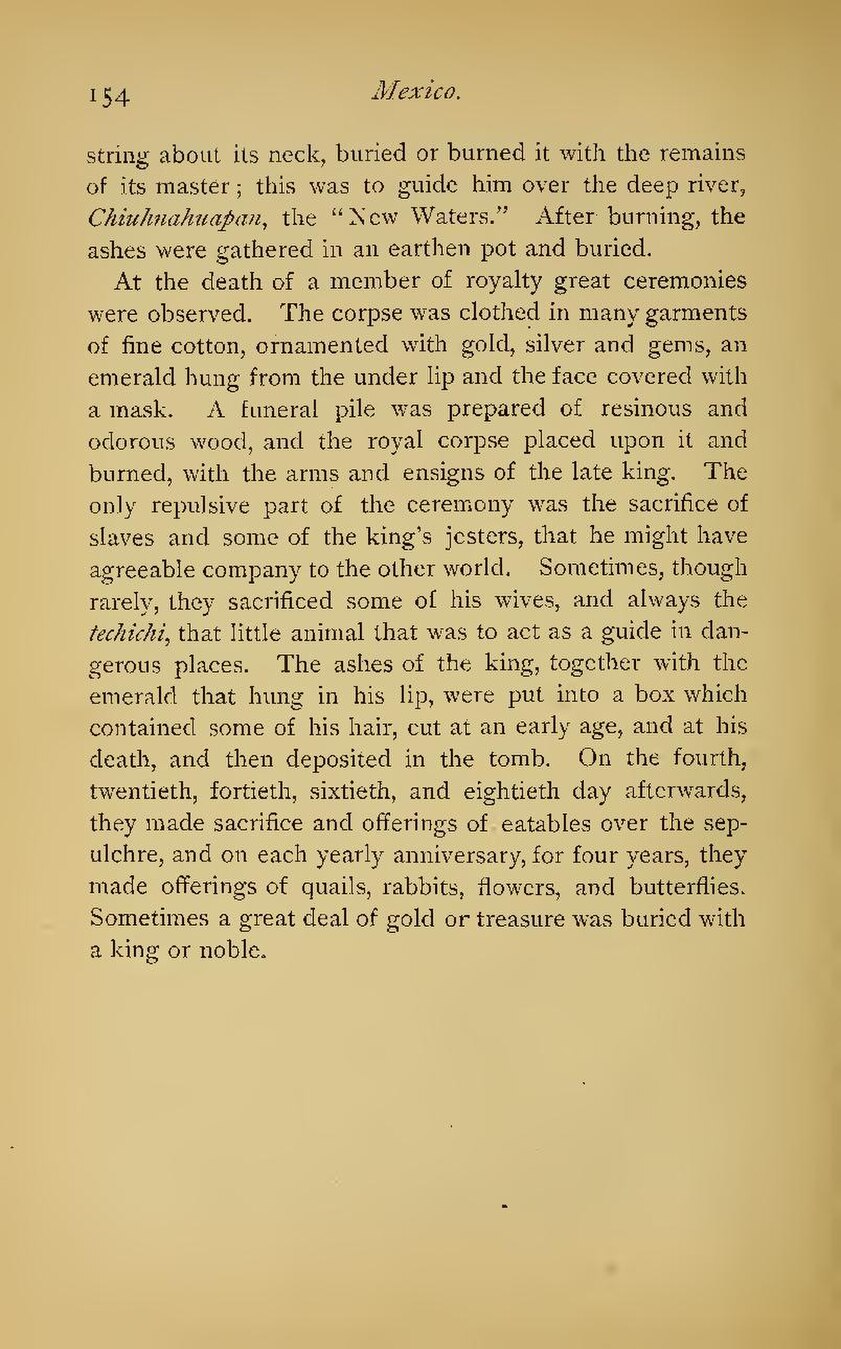string about its neck, buried or burned it with the remains of its master; this was to guide him over the deep river, Chiuhnahuapan, the "New Waters." After burning, the ashes were gathered in an earthen pot and buried.
At the death of a member of royalty great ceremonies were observed. The corpse was clothed in many garments of fine cotton, ornamented with gold, silver and gems, an emerald hung from the under lip and the face covered with a mask. A funeral pile was prepared of resinous and odorous wood, and the royal corpse placed upon it and burned, with the arms and ensigns of the late king. The only repulsive part of the ceremony was the sacrifice of slaves and some of the king's jesters, that he might have agreeable company to the other world. Sometimes, though rarely, they sacrificed some of his wives, and always the techichi, that little animal that was to act as a guide in dangerous places. The ashes of the king, together with the emerald that hung in his lip, were put into a box which contained some of his hair, cut at an early age, and at his death, and then deposited in the tomb. On the fourth, twentieth, fortieth, sixtieth, and eightieth day afterwards, they made sacrifice and offerings of eatables over the sepulchre, and on each yearly anniversary, for four years, they made offerings of quails, rabbits, flowers, and butterflies. Sometimes a great deal of gold or treasure was buried with a king or noble.
